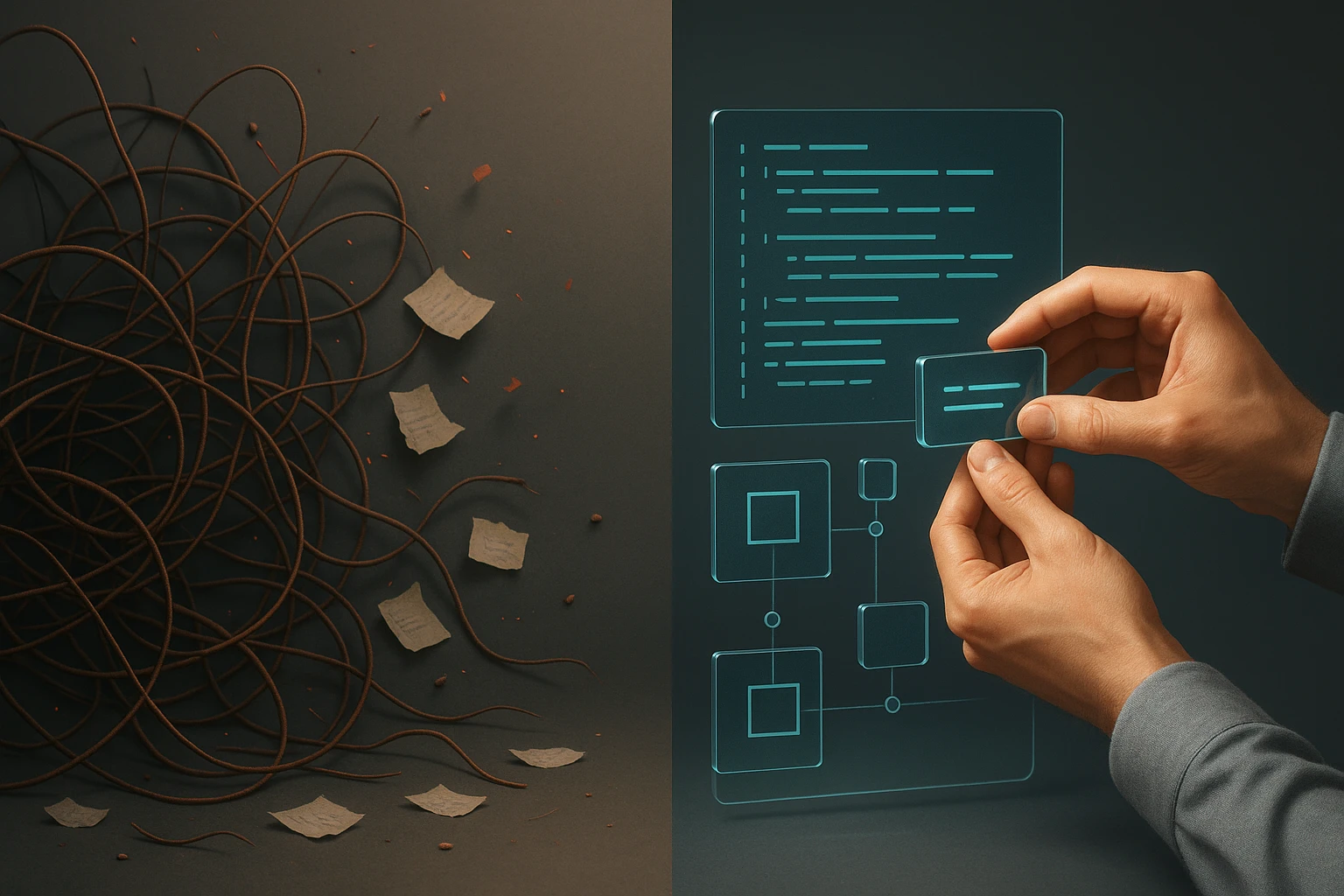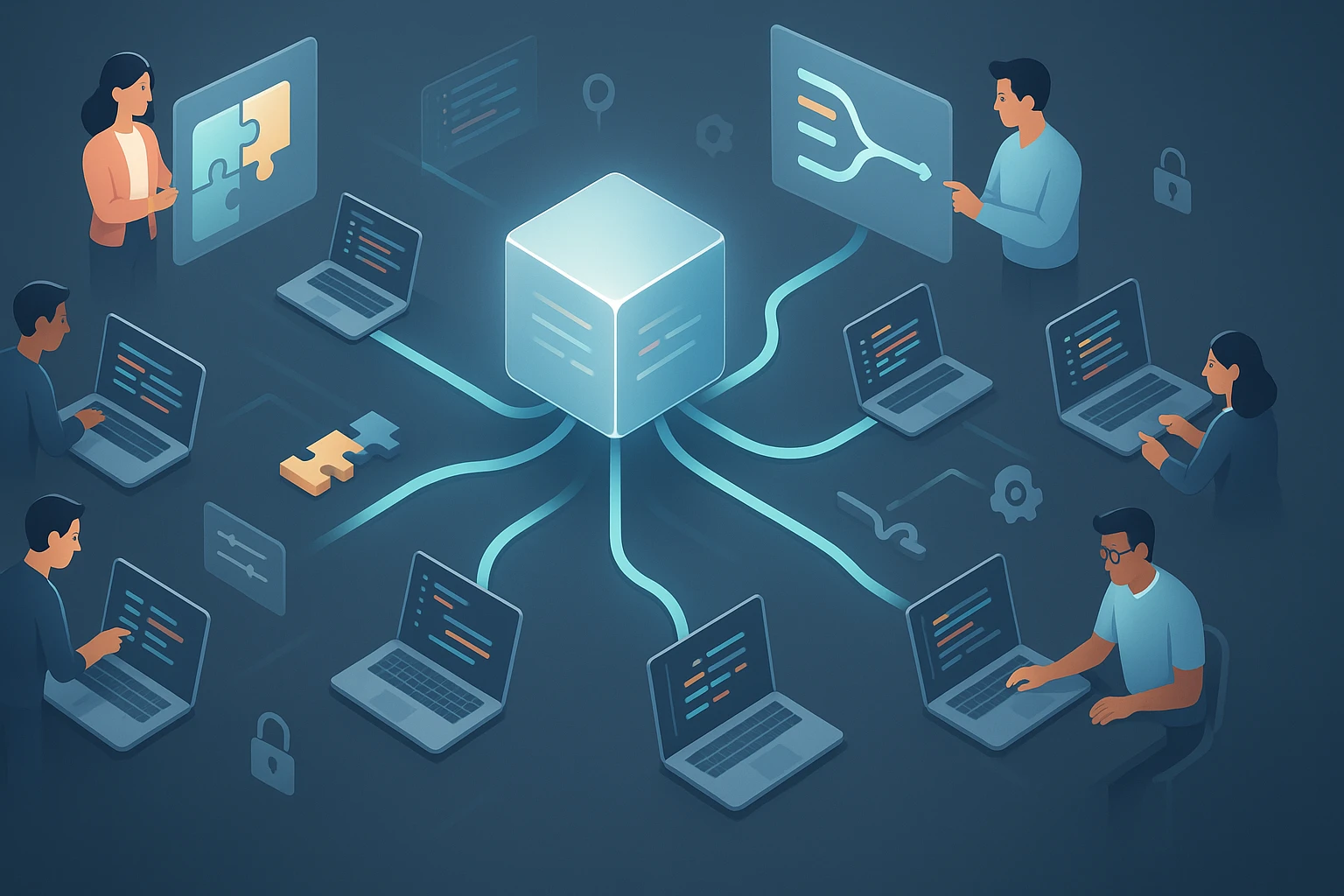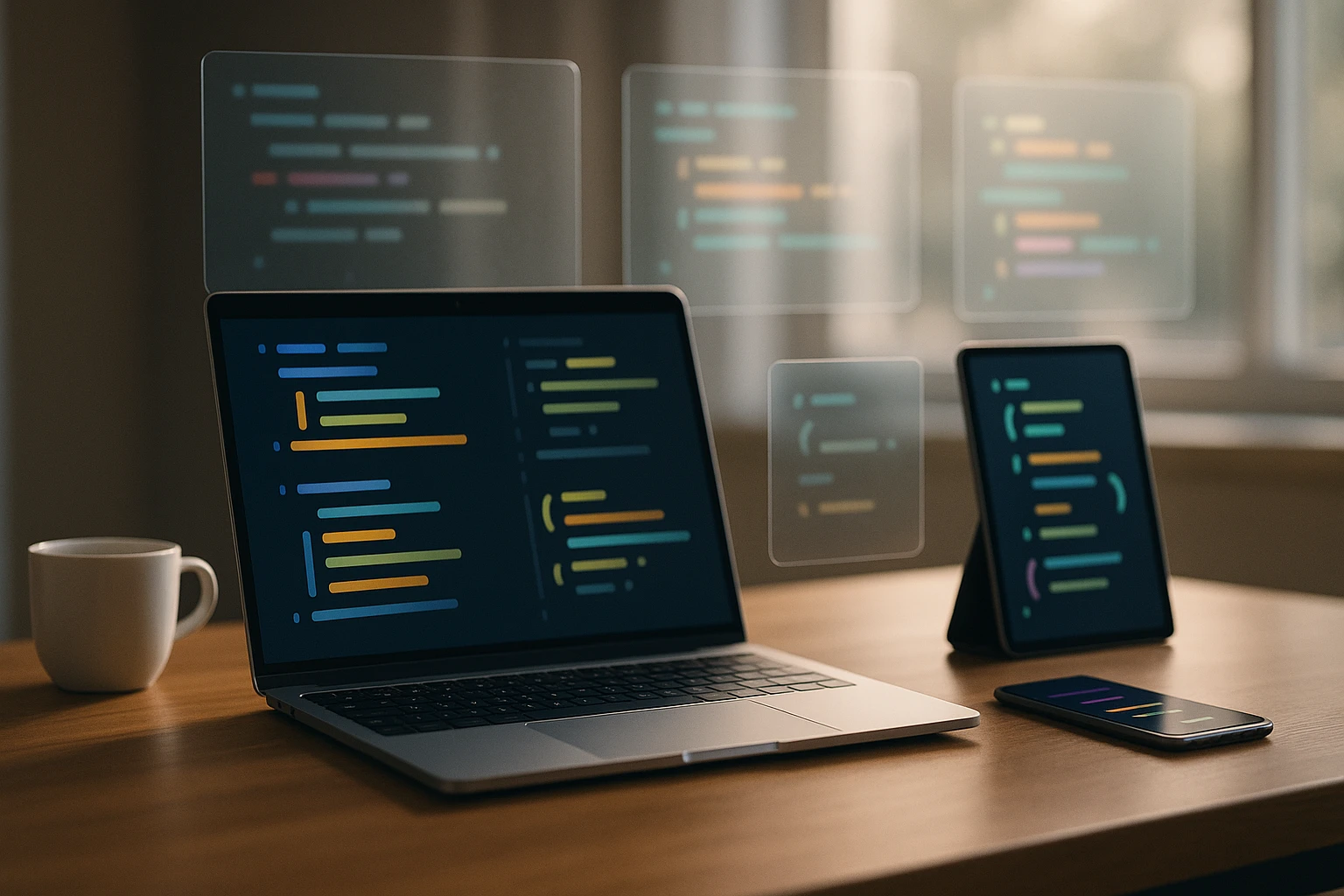What Is Clean Code and Why It Matters

Sponsor message — This article is made possible by Dargslan.com, a publisher of practical, no-fluff IT & developer workbooks.
Why Dargslan.com?
If you prefer doing over endless theory, Dargslan’s titles are built for you. Every workbook focuses on skills you can apply the same day—server hardening, Linux one-liners, PowerShell for admins, Python automation, cloud basics, and more.
What Is Clean Code and Why It Matters
Every developer has encountered that moment of dread when opening a file written months ago—or worse, by someone else—only to find an impenetrable maze of logic, cryptic variable names, and functions that stretch across hundreds of lines. This isn't just frustrating; it's costly. Poor code quality leads to bugs that slip through testing, features that take weeks instead of days to implement, and technical debt that compounds until entire systems need to be rewritten. In an industry where software drives everything from banking to healthcare, the quality of code directly impacts business outcomes, user experiences, and developer well-being.
Clean code represents a fundamental approach to software development that prioritizes readability, maintainability, and simplicity. Rather than simply making programs work, clean code ensures that software remains understandable and modifiable throughout its lifecycle. This philosophy encompasses naming conventions, function design, code organization, and architectural decisions that collectively determine whether a codebase becomes an asset or a liability. The concept transcends specific programming languages or frameworks, offering principles that apply universally across the software development landscape.
Throughout this exploration, you'll discover the core principles that distinguish clean code from merely functional code, practical techniques for writing more maintainable software, and strategies for refactoring existing codebases. You'll learn how clean code practices reduce bugs, accelerate development cycles, and create more sustainable software systems. Whether you're a junior developer establishing good habits or a senior engineer looking to elevate your team's code quality, understanding these principles will transform how you approach software development and collaboration.
The Foundation of Clean Code
Clean code begins with a mindset shift—viewing code as communication rather than mere instruction. When developers write code, they're not just telling computers what to do; they're explaining their intentions to future maintainers, including their future selves. This perspective fundamentally changes how we approach every line of code, every function name, and every architectural decision.
The foundation rests on several interconnected principles. Readability ensures that anyone with reasonable programming knowledge can understand what code does without extensive detective work. Simplicity means choosing the straightforward solution over clever tricks that save a few lines but obscure meaning. Expressiveness involves code that clearly communicates its purpose through well-chosen names and logical structure. Minimal duplication prevents the maintenance nightmares that occur when the same logic exists in multiple places, inevitably diverging over time.
"Code is read far more often than it is written, so optimize for the reader, not the writer."
These principles manifest in everyday coding decisions. Consider variable naming: a variable called d tells you nothing, while elapsedTimeInDays immediately communicates both what it represents and its units. Similarly, a function named process() could do anything, whereas calculateMonthlyInterestRate() leaves no ambiguity about its purpose. These seemingly small decisions accumulate, determining whether a codebase feels intuitive or impenetrable.
The Cost of Neglecting Code Quality
Organizations that dismiss clean code as perfectionism or "nice to have" inevitably pay a steep price. Technical debt—the accumulated cost of shortcuts and poor design decisions—doesn't remain static. It grows exponentially as developers build new features on unstable foundations, creating increasingly fragile systems where even minor changes risk breaking seemingly unrelated functionality.
| Impact Area | Consequences of Poor Code Quality | Benefits of Clean Code |
|---|---|---|
| Development Speed | Velocity decreases over time as developers navigate complexity; simple features take days instead of hours | Consistent velocity maintained; new features built quickly on clear foundations |
| Bug Frequency | Higher defect rates due to hidden dependencies and unclear logic; fixes often introduce new bugs | Fewer bugs due to explicit code; issues isolated and resolved without side effects |
| Onboarding Time | New team members require months to become productive; institutional knowledge becomes critical | New developers contribute within weeks; code serves as documentation |
| Team Morale | Frustration and burnout increase; talented developers leave for better codebases | Pride in craftsmanship; developers enjoy working with maintainable systems |
| Business Agility | Inability to respond quickly to market changes; competitive disadvantage grows | Rapid adaptation to new requirements; sustained competitive advantage |
The financial implications extend beyond development costs. When code quality suffers, testing becomes more difficult and less effective. Deployment risks increase, leading to longer release cycles and more cautious rollouts. Customer-facing bugs damage reputation and erode trust. Meanwhile, competitors with cleaner codebases ship features faster, iterate more effectively, and capture market share.
Core Principles and Practices
Meaningful Names Transform Code Understanding
Naming represents one of the most powerful tools in a developer's arsenal, yet it's often treated as an afterthought. Good names eliminate the need for comments by making code self-documenting. They reduce cognitive load by clearly stating what variables represent, what functions do, and what classes encapsulate. Poor names, conversely, force readers to constantly translate between cryptic abbreviations and actual meaning, exhausting mental energy that could be spent understanding business logic.
✨ Use intention-revealing names: Names should answer why something exists, what it does, and how it's used. A variable named list tells you the data structure but nothing about its contents, while approvedCustomerAccounts immediately communicates both structure and purpose.
✨ Avoid mental mapping: Don't force readers to remember that r means "url without the protocol" or that temp actually holds the final calculated result. Use names that directly represent their meaning without requiring translation.
✨ Use pronounceable names: If you can't discuss your code verbally without sounding ridiculous, the names need improvement. Compare "gen ymdhms" (generation year-month-day-hour-minute-second) with "generationTimestamp"—one facilitates conversation, the other impedes it.
✨ Use searchable names: Single-letter variables and numeric constants become invisible in large codebases. Searching for 7 finds thousands of irrelevant results, while DAYS_PER_WEEK leads directly to relevant code.
✨ Avoid encodings and prefixes: Hungarian notation and similar schemes add noise without value in modern development environments. Trust your IDE's type information instead of embedding it in names like strFirstName or m_description.
"The name of a variable, function, or class should tell you why it exists, what it does, and how it is used. If a name requires a comment, then the name does not reveal its intent."
Functions Should Do One Thing Well
Functions represent the fundamental building blocks of procedural and object-oriented programming. When functions grow large and multipurpose, they become difficult to understand, test, and reuse. The single responsibility principle—that each function should have one reason to change—provides a powerful heuristic for keeping functions focused and manageable.
Small functions offer numerous advantages. They're easier to name descriptively because they do one specific thing. They're easier to test because they have fewer code paths and dependencies. They're easier to reuse because they don't bundle unrelated functionality. They're easier to understand because readers can grasp their entire purpose at a glance.
Function length should be measured not just in lines but in abstraction levels. A function that mixes high-level business logic with low-level implementation details forces readers to constantly shift mental gears. Instead, each function should operate at a consistent level of abstraction, calling helper functions to handle lower-level details. This creates code that reads like a narrative, with each function telling a clear story.
Function parameters deserve special attention. Functions with zero parameters are ideal—they're easy to understand and test. One parameter is good. Two parameters require more thought. Three parameters should be avoided when possible. More than three parameters suggests the function is trying to do too much or that related parameters should be wrapped in an object.
Side effects represent another common function pitfall. A function named checkPassword shouldn't initialize a session—that's a side effect that violates the principle of least surprise. Functions should either change state or return information, not both. This command-query separation makes code more predictable and easier to reason about.
Comments: When to Write Them and When to Refactor Instead
Comments occupy a controversial space in clean code discussions. While some developers view comments as essential documentation, clean code advocates argue that most comments indicate code that should be refactored. The truth lies between these extremes, recognizing that comments serve specific valuable purposes while often masking underlying code quality issues.
Good comments explain why, not what. When business logic requires a non-obvious approach due to performance considerations, regulatory requirements, or domain complexity, comments provide valuable context. Legal comments, such as copyright notices, serve necessary purposes. TODO comments can be useful when they're actively managed rather than accumulating indefinitely. Public API documentation helps users understand how to interact with your code.
Bad comments, however, far outnumber good ones in typical codebases. Comments that simply restate what code obviously does waste space and attention. Redundant comments like "// increment i" next to i++ insult readers' intelligence. Commented-out code creates confusion—is it important? Why wasn't it deleted? Version control systems remember old code, so commented code serves no purpose.
"Don't comment bad code—rewrite it. Clear code with few comments is far superior to cluttered code with lots of comments."
The best approach treats comments as a last resort. Before writing a comment to explain complex code, try extracting that code into a well-named function. Instead of commenting a variable's purpose, rename it to be self-explanatory. Rather than documenting a class's behavior in a comment block, make the class structure and method names reveal that behavior naturally.
Architectural Patterns for Clean Code
Separation of Concerns and Modularity
Large systems become manageable through deliberate separation of concerns—dividing software into distinct sections where each section addresses a separate concern. This principle applies at every scale, from individual functions to entire system architectures. When concerns are properly separated, changes to one part of the system minimally impact other parts, reducing the risk and cost of modifications.
Modularity emerges naturally from separation of concerns. Well-designed modules encapsulate related functionality behind clear interfaces, hiding implementation details from other parts of the system. This information hiding allows modules to change internally without affecting their clients, as long as interfaces remain stable. The result is a system composed of interchangeable parts rather than a monolithic tangle where everything depends on everything else.
Dependency management plays a crucial role in maintaining clean architecture. When high-level business logic depends directly on low-level implementation details, changes to those details force changes throughout the system. Dependency inversion—making both high and low-level modules depend on abstractions—breaks this coupling, allowing each layer to evolve independently.
Error Handling Without Obscuring Logic
Error handling represents a necessary but often messy aspect of software development. Poorly implemented error handling obscures business logic, mixing happy path code with error cases until the main purpose of functions becomes difficult to discern. Clean error handling, conversely, keeps business logic clear while still properly managing exceptional situations.
Exceptions, when available in a language, provide a cleaner alternative to error codes. Rather than forcing every function call to check return values, exceptions allow error handling to be separated from main logic. However, exceptions must be used judiciously—they're for exceptional situations, not normal control flow. Using exceptions for expected conditions creates confusing code where the exception path is actually the common path.
🔍 Provide context with exceptions: Exception messages should explain what operation failed and why, giving maintainers the information they need to diagnose issues. Generic exceptions with no context force developers into lengthy debugging sessions.
🔍 Define exception classes in terms of caller's needs: Rather than creating exception hierarchies that mirror your implementation structure, design exceptions around how callers will handle them. If callers will handle multiple exception types identically, use a single exception type.
🔍 Don't return null: Returning null forces every caller to check for null, cluttering code with defensive checks and creating opportunities for null pointer exceptions. Return empty collections instead of null collections. Use special case objects or optional types to represent absence of values.
🔍 Don't pass null: Passing null as an argument is even worse than returning it. Unless you're working with an API that expects null, avoid passing null in your own code. Design functions so that null arguments are unnecessary.
| Error Handling Approach | Advantages | Disadvantages | Best Used When |
|---|---|---|---|
| Exceptions | Separates error handling from business logic; forces callers to acknowledge errors; provides stack traces | Can be overused; performance overhead; can make control flow less obvious | Handling truly exceptional conditions in languages that support exceptions |
| Error Codes | Explicit in function signatures; no hidden control flow; minimal performance impact | Easy to ignore; clutters calling code with checks; doesn't provide stack traces | Performance-critical code; languages without exceptions; expected error conditions |
| Optional/Maybe Types | Makes absence of value explicit; type-safe; forces callers to handle both cases | Requires language support; can lead to nested optionals; verbose in some languages | Representing values that may legitimately be absent; avoiding null references |
| Result Types | Combines success and error cases; type-safe; explicit in signatures | Requires language support or library; more verbose than exceptions | Operations with expected failure modes; functional programming contexts |
Testing as a Driver of Clean Code
Testing and clean code exist in a symbiotic relationship. Clean code makes testing easier, while the discipline of writing tests encourages cleaner code. Untestable code is almost always poorly designed—tightly coupled, highly dependent, and mixing concerns. The effort required to make code testable naturally pushes it toward better design.
Test-driven development (TDD) takes this relationship further by making tests the primary driver of design. By writing tests before implementation, developers are forced to think about how code will be used before thinking about how it will be implemented. This user-first perspective leads to better interfaces and more modular designs.
Clean tests share characteristics with clean production code. They should be readable, with clear arrange-act-assert structure. They should test one concept per test, avoiding the temptation to verify multiple behaviors in a single test just to save setup code. They should use descriptive names that document what behavior they verify. They should avoid complex logic—tests with conditionals or loops are themselves candidates for testing.
"Tests are not a separate concern from the code—they are the first and most important client of your code. If your code is hard to test, it's hard to use."
The F.I.R.S.T. principles provide a useful framework for clean tests. Tests should be Fast—running quickly enough that developers run them frequently. They should be Independent—not relying on other tests or requiring specific execution order. They should be Repeatable—producing the same results in any environment. They should be Self-validating—having a clear pass/fail outcome without manual inspection. They should be Timely—written just before or alongside the production code they verify.
Refactoring: Improving Code Without Changing Behavior
Refactoring represents the practice of improving code structure without altering its external behavior. This discipline allows codebases to evolve and improve continuously rather than degrading into unmaintainable messes. Refactoring isn't a separate phase that happens after features are complete—it's an ongoing activity integrated into daily development.
Effective refactoring requires a safety net of tests. Without tests to verify that behavior hasn't changed, refactoring becomes a dangerous guessing game. With comprehensive tests, developers can confidently restructure code, running tests after each small change to ensure nothing broke. This tight feedback loop makes refactoring safe and sustainable.
Common refactoring patterns address recurring code smells. Extract method breaks large functions into smaller, well-named pieces. Rename improves clarity by replacing cryptic names with intention-revealing ones. Move method relocates functionality to more appropriate classes. Replace conditional with polymorphism eliminates complex switch statements by leveraging object-oriented design. Extract class separates responsibilities that have been inappropriately combined.
The boy scout rule—"leave the code cleaner than you found it"—provides a practical approach to incremental improvement. Rather than waiting for permission to refactor or scheduling large refactoring projects, developers improve code slightly with each change. Over time, these small improvements compound, gradually transforming messy codebases into clean ones without disrupting feature development.
Recognizing Code Smells
Code smells are indicators that something might be wrong with code structure. They're not bugs—the code works—but they suggest design problems that will cause maintenance difficulties. Learning to recognize code smells helps developers identify refactoring opportunities and avoid creating problematic code in the first place.
Long methods indicate that a function is doing too much. Methods that scroll off the screen are almost certainly violating the single responsibility principle. Breaking them into smaller, well-named helper methods improves readability and reusability.
Large classes suffer from similar problems at a higher level. Classes with dozens of methods and fields are trying to do too much. Identifying cohesive subsets of functionality and extracting them into separate classes creates more maintainable designs.
Duplicate code creates maintenance nightmares. When the same logic appears in multiple places, bug fixes and enhancements must be applied everywhere, and inevitably some instances get missed. Extracting duplicated code into shared functions or classes eliminates this problem.
Feature envy occurs when a method seems more interested in another class than its own. Methods that repeatedly access data or call methods on the same external object might belong in that other class. Moving the method to where the data lives often improves encapsulation.
Primitive obsession means using primitive types instead of small classes to represent domain concepts. Using strings for everything—email addresses, phone numbers, postal codes—misses opportunities for validation and behavior. Small value objects make code more expressive and type-safe.
"Any fool can write code that a computer can understand. Good programmers write code that humans can understand."
Team Practices for Maintaining Code Quality
Code Reviews as Learning and Quality Gates
Code reviews serve multiple purposes in maintaining clean code across teams. They catch bugs and design issues before they reach production. They spread knowledge about different parts of the codebase. They help maintain consistent coding standards. Most importantly, they create a culture where code quality matters and developers learn from each other.
Effective code reviews focus on meaningful issues rather than nitpicking style. While consistency matters, automated tools should handle formatting and style enforcement, freeing reviewers to focus on logic, design, and maintainability. Reviewers should ask questions rather than making demands, creating dialogue that helps both reviewer and author learn.
The tone of code reviews significantly impacts team culture. Reviews should be constructive and kind, focusing on the code rather than the person. Comments like "this approach is wrong" should be replaced with "have you considered this alternative approach?" or "I'm concerned this might cause issues when..." Framing feedback as questions and concerns rather than judgments keeps reviews productive and maintains team morale.
Coding Standards and Style Guides
Consistent coding standards make codebases feel unified rather than like collections of individual styles. When every file follows the same conventions, developers spend less mental energy adjusting to different styles and more energy understanding business logic. Consistency also makes code reviews more efficient by eliminating debates about subjective preferences.
However, standards should serve the goal of clean code rather than becoming ends in themselves. Overly prescriptive standards that mandate specific implementation approaches stifle creativity and prevent developers from choosing the best solution for each situation. The best standards focus on principles and patterns rather than rigid rules, providing guidance while allowing flexibility.
Automated tooling makes standards enforcement effortless. Linters catch violations before code review, formatters ensure consistent style without manual effort, and static analysis tools identify potential bugs and design issues. These tools remove the burden of standards enforcement from humans, allowing code reviews to focus on higher-level concerns.
Language-Specific Considerations
While clean code principles apply universally, their implementation varies across programming languages. Each language has idioms and best practices that align with its design philosophy. Writing clean code means embracing these idioms rather than fighting against language characteristics.
Object-oriented languages like Java and C# emphasize encapsulation, inheritance, and polymorphism. Clean code in these languages leverages these features appropriately—using inheritance for genuine is-a relationships, favoring composition over inheritance for has-a relationships, and using interfaces to define contracts between components.
Functional languages like Haskell, Scala, and increasingly JavaScript encourage immutability, pure functions, and function composition. Clean code in functional contexts avoids side effects where possible, uses higher-order functions to eliminate repetitive patterns, and leverages type systems to make invalid states unrepresentable.
Dynamic languages like Python and Ruby offer flexibility but require discipline to maintain clarity. Clean code in these languages uses clear naming to compensate for lack of static types, writes comprehensive tests to catch errors that type systems would prevent, and documents expected types and behaviors explicitly.
Systems languages like C and Rust demand attention to memory management and performance. Clean code in these contexts balances clarity with efficiency, uses abstractions that don't compromise performance, and documents resource ownership and lifetime expectations clearly.
The Business Case for Clean Code
Clean code isn't just an aesthetic preference or a matter of professional pride—it has direct, measurable business impact. Organizations that prioritize code quality ship features faster, experience fewer production incidents, and maintain competitive advantages that compound over time.
Development velocity represents the most visible benefit. Teams working with clean codebases maintain consistent velocity over time, while teams with poor code quality experience steadily decreasing velocity as technical debt accumulates. This difference becomes dramatic over months and years, with clean code teams delivering multiples more value.
Defect rates directly correlate with code quality. Clean, well-tested code has fewer bugs initially and makes remaining bugs easier to fix. Production incidents cost organizations money through lost revenue, damage to reputation, and emergency response efforts. Reducing incident frequency and severity through better code quality provides clear return on investment.
Employee retention improves when developers work with quality codebases. Talented developers want to write clean code and become frustrated when forced to work with poor quality systems. The cost of replacing experienced developers—recruiting, hiring, and onboarding—far exceeds the investment in maintaining code quality.
"Quality is free, but only to those who are willing to pay heavily for it."
Technical debt, like financial debt, accumulates interest. Small shortcuts and design compromises seem to save time initially, but they create ongoing costs every time that code must be read, modified, or debugged. Eventually, the interest payments—the extra time required to work around poor design—exceed the original time "saved." Organizations that treat code quality as optional find themselves paying this interest indefinitely.
Getting Started: Practical Steps for Improvement
Improving code quality doesn't require wholesale rewrites or months of refactoring. Small, consistent improvements compound over time, gradually transforming codebases and team practices. The key is starting immediately with achievable steps rather than waiting for perfect conditions.
🎯 Start with naming: Improving variable, function, and class names requires no architectural changes and immediately improves readability. Spend extra time finding the right name—it's an investment that pays dividends every time someone reads that code.
🎯 Write tests for new code: Even if the existing codebase lacks tests, write tests for all new code and modifications. This creates a growing safety net and demonstrates the value of testing to skeptical team members.
🎯 Limit function length: Challenge yourself to keep functions under 20 lines. This constraint forces extraction of helper functions and clearer organization. When functions exceed this limit, it's usually because they're doing too much.
🎯 Apply the boy scout rule: Make code slightly cleaner each time you touch it. Rename a confusing variable. Extract a long method. Add a missing test. These small improvements accumulate without disrupting feature development.
🎯 Use linters and formatters: Automate style enforcement so team members can focus on substance. Configure tools to match team preferences, then let them handle the tedious work of consistency.
For teams working with legacy codebases, the challenge seems more daunting. Large systems with years of accumulated technical debt can't be cleaned up overnight. However, strategic refactoring focused on frequently modified areas provides the best return on investment. Code that's rarely touched doesn't need to be perfect—focus cleaning efforts where they'll have the most impact.
How do you balance writing clean code with meeting deadlines?
Clean code isn't slower—it's faster in the long run. The time spent writing clear, well-organized code is recovered many times over through easier debugging, faster feature additions, and fewer production issues. The key is recognizing that "quick and dirty" code creates technical debt that must be repaid with interest. That said, pragmatism matters. In true emergencies, taking shortcuts may be necessary, but treat these as conscious technical debt that will be addressed soon, not as normal practice.
What's the best way to convince management to prioritize code quality?
Speak in business terms rather than technical ones. Quantify the cost of poor code quality: how much time is spent debugging? How often do production incidents occur? How long does it take to onboard new developers? Compare these costs to competitors or industry benchmarks. Frame clean code as an investment in development velocity and reliability rather than as perfectionism. Small pilot projects that demonstrate improved velocity can be powerful proof.
Should we refactor existing code or just focus on new code?
Both, but strategically. Apply the boy scout rule to improve code as you touch it, focusing refactoring efforts on frequently modified areas. Code that's stable and rarely changed doesn't need to be perfect. Create a heat map of your codebase showing which files change most often, then prioritize cleaning those areas. This approach provides maximum benefit without requiring massive refactoring projects.
How do you handle team members who resist clean code practices?
Lead by example rather than by mandate. When your clean code makes features easier to implement and bugs easier to fix, others will notice. Share specific examples of how clean code solved problems. Involve resistant team members in defining team standards so they have ownership. Address underlying concerns—sometimes resistance stems from past experiences with overly rigid standards or from time pressure that makes quality seem like a luxury.
What's the most important clean code principle to start with?
Meaningful naming provides the highest immediate impact with the lowest barrier to entry. Improving names requires no architectural changes, no new tools, and no team coordination. Yet clear names dramatically improve code readability and reduce the need for comments and documentation. Start by being more thoughtful about naming in new code, then gradually improve names in existing code as you work with it.
How do you maintain code quality as teams grow?
Establish clear standards early and automate their enforcement. Code reviews become critical for spreading knowledge and maintaining consistency. Pair programming helps new team members learn team practices. Documentation of architectural decisions and coding standards provides reference material. Regular team discussions about code quality keep it visible as a priority. Most importantly, make quality a part of your definition of "done"—features aren't complete until they meet quality standards.




